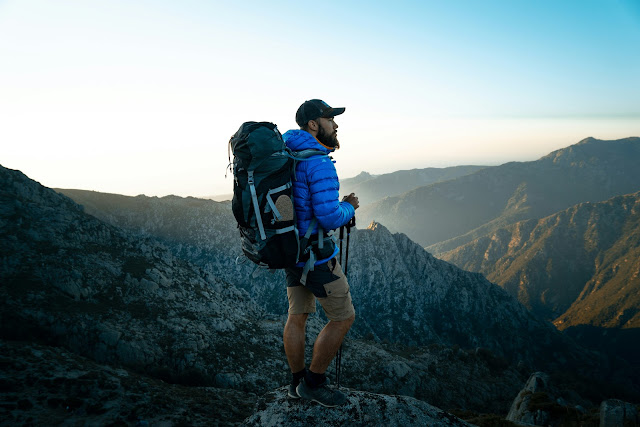Hiking alone has gained popularity among outdoor enthusiasts who seek solitude, adventure, and personal growth. While some consider it a meditative experience, others find it an adrenaline rush. However, solo hiking presents risks, making it essential to evaluate both the benefits and dangers before embarking on such a journey.
Reasons People Choose to Hike Alone
1. Seeking Solitude and Reflection
Many individuals hike alone to escape the distractions of daily life. The solitude allows them to reflect, meditate, and enjoy their own company. Nature provides a peaceful setting where they can disconnect from technology and responsibilities.
2. Personal Challenge and Growth
Solo hiking pushes individuals out of their comfort zones. Without a group for support, hikers must rely on their own skills, endurance, and decision-making abilities. Overcoming challenges on the trail fosters resilience and self-confidence.
3. Freedom and Flexibility
Hiking alone allows for complete control over the journey. Solo hikers can set their own pace, choose when to rest, and decide on detours without having to accommodate others. This freedom makes the experience more spontaneous and enjoyable.
4. Connecting with Nature
Without distractions from conversation, solo hikers often experience nature more deeply. They become more aware of their surroundings, noticing the rustling of leaves, the calls of birds, and the changes in the landscape.
5. Avoiding Social Pressures
Group hikes may involve compromises regarding route selection, speed, and timing. Some people prefer to hike alone to avoid the stress of coordinating with others or dealing with group dynamics.
6. Training for Greater Adventures
For those preparing for long-distance hikes or expeditions, solo hiking serves as essential training. It allows hikers to assess their endurance, navigation skills, and preparedness for more significant challenges.
Is Hiking Alone Dangerous?
Hiking alone comes with inherent risks, but with proper preparation and precautions, it can be safe. The level of danger depends on several factors, including experience, location, weather conditions, and preparedness.
1. Risk of Getting Lost
Without a companion to help with navigation, solo hikers may lose their way. Poor trail markings, unexpected weather changes, or a wrong turn can lead to disorientation. To mitigate this risk, hikers should carry a detailed map, a GPS device, or a compass and familiarize themselves with the route beforehand.
2. Wildlife Encounters
Hiking in remote areas increases the chances of encountering wildlife such as bears, snakes, or mountain lions. While most animals avoid humans, surprising one could lead to aggressive behavior. Solo hikers should research local wildlife, carry bear spray when necessary, and follow proper safety guidelines.
3. Injury Without Assistance
One of the biggest dangers of solo hiking is sustaining an injury with no immediate help. A twisted ankle, a fall, or dehydration can turn a simple hike into a life-threatening situation. Carrying a first aid kit, informing someone about the hiking plan, and having an emergency communication device can enhance safety.
4. Weather and Environmental Hazards
Unexpected weather changes, such as storms, extreme temperatures, or flash floods, pose risks to solo hikers. Checking the weather forecast before heading out, wearing appropriate gear, and being prepared for sudden climate changes can help mitigate these dangers.
5. Psychological Challenges
Hiking alone can be mentally demanding. Fear, loneliness, and self-doubt may arise, especially in unfamiliar or challenging environments. Developing a positive mindset, practicing mindfulness, and having experience in solo outdoor activities can help overcome these challenges.
6. Encounters with Other People
While rare, there is a possibility of encountering hostile individuals on the trail. Solo hikers should trust their instincts, avoid sharing too much information with strangers, and consider carrying self-defense tools, such as a whistle or personal alarm.
How to Hike Alone Safely
Although solo hiking has risks, proper preparation can significantly reduce them. Here are some essential safety tips:
- Plan Ahead: Research the trail, check the weather, and inform a trusted person of the hiking plan, including estimated return time.
- Carry Navigation Tools: Have a GPS, map, or compass to avoid getting lost.
- Pack Essentials: Bring food, water, a first aid kit, and emergency supplies such as a flashlight, whistle, and space blanket.
- Stay Aware of Surroundings: Pay attention to trail markers, avoid taking unnecessary risks, and remain alert to wildlife and other potential hazards.
- Know Your Limits: Choose trails that match your experience level and physical fitness to prevent exhaustion or injury.
- Have an Emergency Plan: Carry a personal locator beacon (PLB) or a satellite phone in case of emergencies.
Conclusion
Hiking alone can be a rewarding experience, offering opportunities for self-discovery, adventure, and personal growth. While it carries inherent risks, taking necessary precautions can make it a safe and enjoyable activity. Whether seeking solitude or pushing personal limits, solo hiking remains a unique and valuable way to connect with nature and oneself. For more information visit the site here:- hikgo


